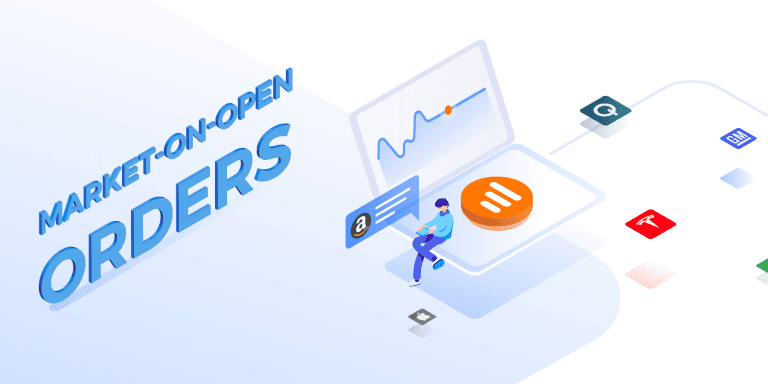Do you know that IQ Option traders have an opportunity to open deals (both Buy and Sell) at the opening price of the asset? This feature is obviously meant to be used when working with CFDs stocks (contracts for difference) due to the fact that stcoks are not traded 24/7 and have periods of inactivity. But why would you want to use this feature and, more importantly, how to get the max out of this seemingly minor opportunity?
Before the introduction of “Market-on-open Orders” feature, traders had only one option to submit a pending order. By filling in the “Purchase at…” box at the bottom right-hand corner of the trade room, you could specify the price at which you were ready to buy or sell the asset. This option can also be of great help. For example, when expecting an asset price to rebound after a sudden drop, the trader could set the purchase price at a lower level than currently observed on the market. If the forecast holds true, the ensuing positive trend will creative a trading opportunity.

Not being traded during the weekends or traded during the American business hours only (CFDs), these instruments can open at a noticeably different price. The discrepancy can not only be predicted but also used to gain leverage against the market. This feature should be applied differently to CFDs due to fundamental differences in the way they are traded.
Contracts for difference are an equity-based instrument. Therefore, there is always a particular company behind them. You might want to follow the financial performance of the said company in order to trade CFDs like most professional traders do. Every publicly traded company reveals key financial data four times a year, before or after the market closure. The following trading session usually starts with a sudden increase or decrease in the share price (depending on the information provided in the report).
With numerours assets available in the CFD stocks section of the IQ Option trading platform, suchlike opportunities arise quite often.

All in all, market-on-open orders, if used correctly, can become a valuable addition to your trading strategy. This feature, however, is hard to master, as it is not always easy to predict the direction of the price at the moment of market openings and also to tell which direction it will follow afterwards.

